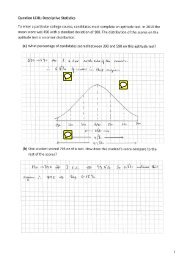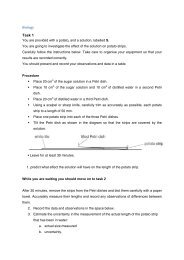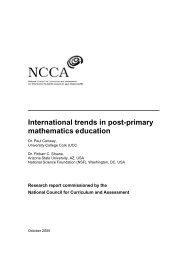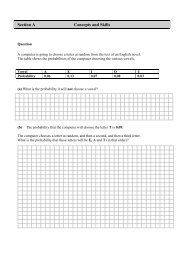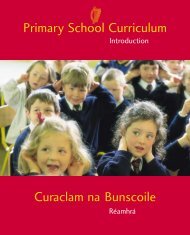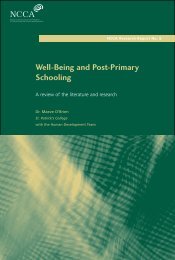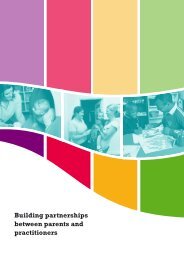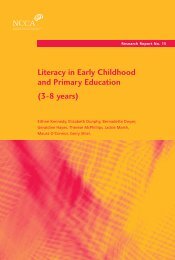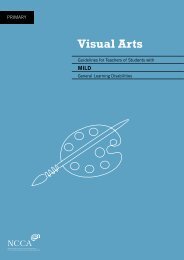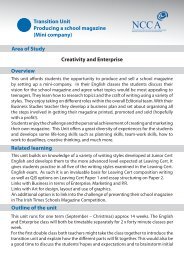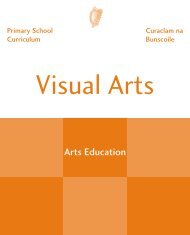Up and Away - National Council for Curriculum and Assessment
Up and Away - National Council for Curriculum and Assessment
Up and Away - National Council for Curriculum and Assessment
Create successful ePaper yourself
Turn your PDF publications into a flip-book with our unique Google optimized e-Paper software.
Section 6 Literacy development <strong>for</strong> older pupils<br />
Cycle 1. Names <strong>and</strong> countries<br />
For pupils with no English <strong>and</strong> very basic literacy needs. These pupils<br />
may have no previous experience of <strong>for</strong>mal schooling.<br />
Literacy begins with known language<br />
For pupils who are absolute language beginners a good place to start is with their names <strong>and</strong> the names<br />
of the countries that their families come from. This allows pupils to familiarise themselves with the<br />
names of their classmates <strong>and</strong> rein<strong>for</strong>ces the inclusiveness of the learning environment.<br />
The second stage of this cycle (reading) introduces pupils to the concept of the alphabet.<br />
Teachers’ notes<br />
The notes which accompany the activities in this first cycle are quite detailed. Working with pupils<br />
beyond Senior Infants who, in addition to learning to speak, read <strong>and</strong> write in a new language, may<br />
also be new to the learning environment is a challenging task. The detailed nature of the notes shows<br />
how the change of focus from speaking to reading to writing is facilitated by a series of carefully<br />
planned steps.<br />
Letter flash cards (pages 193-195)<br />
The letter flash cards are an excellent resource <strong>for</strong> developing basic literacy skills. They are extremely<br />
effective in:<br />
Developing sound-symbol correspondence.<br />
Developing <strong>and</strong> consolidating spelling skills.<br />
The flash cards have a dot towards the top left corner to indicate which way up the letters are. Pupils<br />
often say the name of the letter correctly, but then place it upside down or on its side. With the letters<br />
placed alongside each other, the significance of the dot can be pointed out.<br />
The dot has been placed in the top left corner as this is the point on a page where we normally start<br />
writing <strong>and</strong> to which our attention is drawn.<br />
189



